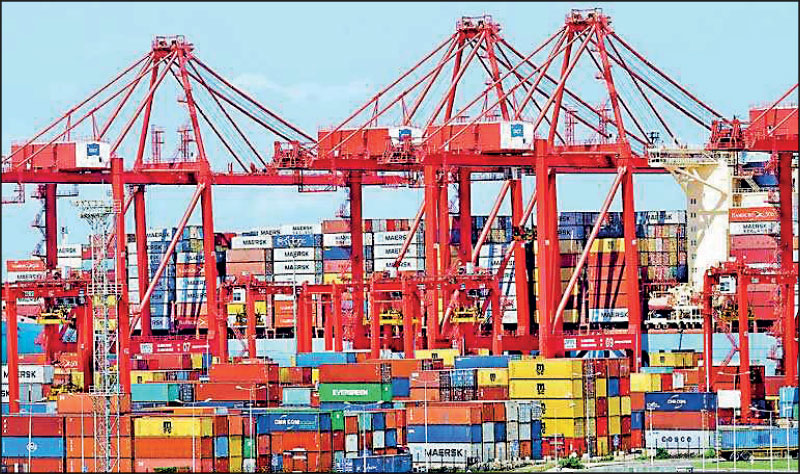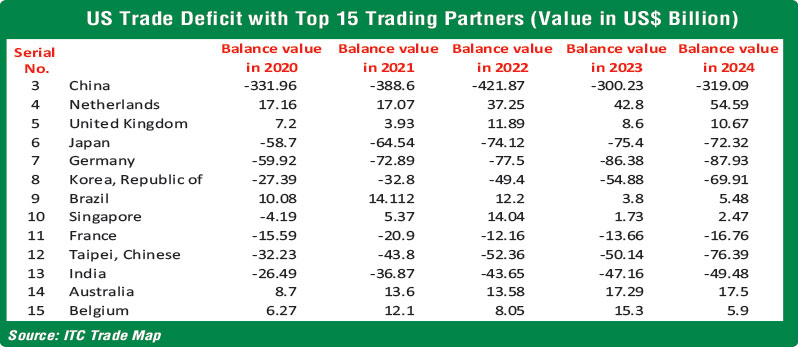Sunday Dec 14, 2025
Sunday Dec 14, 2025
Friday, 25 July 2025 02:43 - - {{hitsCtrl.values.hits}}

Although finalising an FTA is a lengthy process and time consuming, it is advisable to commence sooner, exploring areas and avenues to prevent surprises
 Introduction
Introduction
History tells us that the 2008 GFC was effectively managed with the coordinated effort and participation of nations and states. Would this be the current state of reviving world economy in the event of future GFCs, in particular the most vulnerable economies? The departure from collective support and drift towards national-centric mindset and geo-politics is becoming a major barrier in the future for global participation. As an immediate example, the Trump’s high reciprocal tariff across its US trading partners demonstrated the emergence of nationalised policies with no concerns to the long-term trading partners. Global free trade has benefits and drawbacks that lead to opposing situations despite is often touted for economic growth, reduce prices through healthy competition, etc. The COVID-19 pandemic made countries to look beyond free trade, especially in the event the closure and restriction of borders.
Impact to Sri Lanka
With the recent declaration of Trump’s reciprocal tariffs, in spite of sending warning signals during his presidential campaign, Sri Lanka Government was least concerned of its consequences to the exports to US which was likely to affect the apparel industry. The announcement of 44% tariffs, 2 April 2025, based on the trade imbalance, which primarily based on FoB (Free on Board) price difference of volume of exports to imports and halving the value. The announcement of lowering to 30%, Government claims it was a result of ongoing negotiations with US counterparts. The new tariff now becomes 40% which constitute a 10% base-levy added to 30% resulting an aggregate 40%. The 10% base-line levy is charged inside USA primarily to bolster US local industries and applies to all exporting countries. The tariff is viewed as a discouragement of exports for goods of Sri Lankan origin unless measures are taken to counter the tariff burden.
On comparing the exporting countries of apparels and finished textile products, Sri Lanka had to compete with Indonesia 19%, Vietnam 20% India 26% and Bangladesh 35% as per the current scheme effective from 1 August 2025, exports of gemstones and tea will also be affected. Could Sri Lanka further bargain a lower figure in par with Indonesia? The April declaration was mathematically rudimentary as the tariffs are applied as per Harmonised System code, (HS code) specifying each product irrespective of the destination of import. It is to be answered and require clarification on how the tariffs on goods exported from two different countries having different tariff percentages be computed for the same HS code. To date no one had discussed or relieved.
The reciprocal tariff revisions forced to bring all affected countries for negotiations expecting a “win-win” outcome but appears to have a hidden agenda of US. Bringing those countries individually to a negotiation table sounds ethical and fair, nevertheless to be exercised cautiously as the motives of US is yet unknown, could be unknowingly to align with US foreign policies including military policies. Trump also warned countries who hold anti-American policies for further increase of tariffs targeting BRICS group of developing nations. Will this open up a Pandora box that might create rather adverse effects globally than solving US trade issue? The political afflictions, economic superiority and nationalistic mindsets override the economic theories and practices promoting global free trade.
In the event the export earnings are significantly reduced it affects the SL GDP growth negatively and the targets set by IMF EFF on Sri Lanka repayments capacity of debts including the ISB. Recently, I learnt that our immediate past President was sharing similar thoughts in this context of repayments of debts. Has the IMF obtained consensus of all major economies before putting forward the IMF EFF for Sri Lanka? I am sure not.
Alternatives and workaround solutions
To manage the inequalities and setbacks of extraneous nature should be assessed and accounted in every budget proposal. An economy of the size of Sri Lanka even before the declaration of bankruptcy in 2022 is hardly able to fight back without external help. The political interferences, corruption and malpractices hitherto prevailed had played a negative role on the economy.
The global free trade advocated by liberalised economies and powerful countries independently and unilaterally making decision is seen as a departure from its philosophy hitherto growing. To withstand economic storms, Sri Lanka needs to explore workable alternatives making successful turnarounds.
Cost of goods sold: To be more competitive in the international trade, the COGS needs to be fair and reasonable and possibly a reduction. Not advocating the reducing of the workforce but make efficient and improve productivity. Germany was a good example where their wages are high according to international standards but products are still competitive.
FTA: Free Trade Agreements with a single country or group of nations to reduce and eliminate trade barriers are more favourable as it boosts job growth, promotes international trade and investment opportunities resulting in economic growth. Although finalising an FTA is a lengthy process and time consuming, it is advisable to commence sooner, exploring areas and avenues to prevent surprises.
Diversification of trade: Exploring new markets, also overcoming barriers of high taxes and levies with existing partners. Not to bow down to before economic powers.
Export value added goods, need to be investigated rather than exporting as raw products, making high returns.
Explore non-traditional goods for exports especially for the niche markets.
US tariffs in a nutshell
As per economic historian Douglas Irwin, there were three distinct periods in the history of US tariffs, in the 18th to 19th centuries – targeted for revenue growth with increased tariffs, 19th to 20th called the restrictive where the tariff were somewhat reduced compared to previous periods and finally with liberalisation and opening for global free trade from 20th century onwards a reciprocity period, the average tariff declined. The current revision of tariff which is reciprocity tariff making a level playing field between states or countries imposing tariffs on exports – conducive for free trading. The changes brought forward with the new tariffs show a clear departure from the free trade focus and returning back to “targeted revenue growth” model which focuses on revenue earning under the guise of reciprocity. Now question arises on the future of free trade.
Conclusion
Despite heavy displeasure from Southeast Asian governments and reinforced the hollowness of US claims to support global democracy and economic stability, regional leaders, including the Malaysian Prime Minister and Australian Foreign Minister, have criticised the tariffs as coercive and self-defeating, with economic modelling showing that retaliatory protectionism could result in severe economic damage to the region. In contrast, defending open trade and implementing RCEP (Regional Comprehensive Economic Partnership) commitments can help Southeast Asian economies, the 3rd world, protect employment and boost growth, softening the blow of lost US demand.
The increases of tariffs created some turmoil as headline inflation is on the rise despite rejecting the arguments claiming it is due to temporary volatility of food and energy prices. This shows the effects are being trickling through within US, proving every action has a reaction, either positive or negative. The new unilateral tariffs now will be effective from 1 August, some countries are still in the process of negotiations to arrive at more concessions. As per Sri Lankan Government, the Government delegation is optimistic that there will be further softening of tariffs. However, the Government spokesman was reluctant to disclose what negotiations had taken place and the deals entered with until finalised. We hope and pray that Sri Lanka Government will succeed in their discussions.
Finally, concluding with the following quote where former US president Ronald Regan replied to a question asked by reporters.
Would you be able to function at your age as President Kennedy did during Cuban missile war with sleepless nights? NOT at ALL, my opponents are youths and inexperienced, followed by laughter. Would this be the situation of Sri Lanka now? Appears to be so!
References:
[1] https://eastasiaforum.org/2025/07/14/tariffs-trump-all-in-aseans-latest-get-together/
[2] https://www.india-briefing.com/news/us-imposes-26-tariff-on-india-36763.html/
[3] https://www.smh.com.au/business/the-economy/trump-is-misleading-the-american-people-20250716-p5mf9c.html
[4] https://www.dfat.gov.au/trade/about-ftas/the-benefits-of-free-trade-agreements
[5] https://www.ft.lk/front-page/US-offers-1-161-product-lines-for-potential-duty-free-access-Deputy-Minister/44-779162
